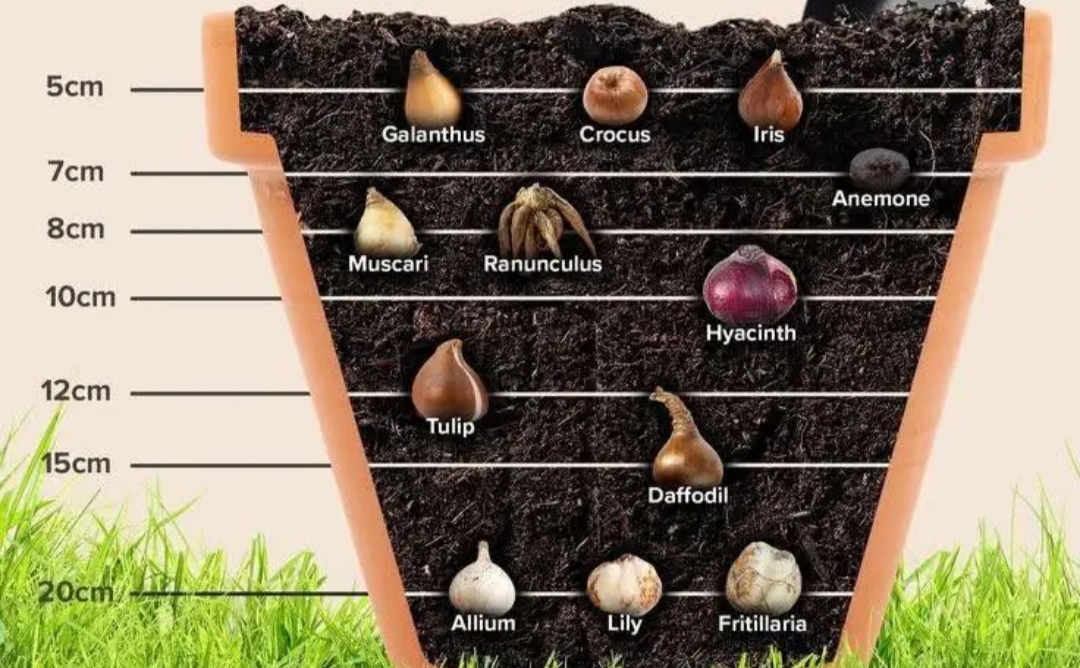Introduction and Origin
Planting flower bulbs is one of the simplest and most rewarding ways to bring seasonal color and elegance to a garden. But one often-overlooked key to success lies in planting depth. This guide was developed to help both beginner and seasoned gardeners understand how deep each type of bulb should be planted for optimal health and beauty.
The idea stems from traditional horticultural practices that emphasize respecting each species’ natural growth patterns. Knowing how deep to plant your bulbs ensures they have the stability, temperature control, and root support they need to thrive.
Cultural Significance
Bulb planting is a ritual tied closely to the rhythms of nature and culture. In countries like the Netherlands, Japan, and parts of the U.K., bulbs such as tulips, irises, and lilies are more than just flowers—they’re part of national identity and seasonal celebrations. Planting bulbs at the correct depth honors these long-standing traditions and ensures blooms that delight generations.
Ingredients Quantity
Below are general recommended planting depths for common flower bulbs:
- Galanthus (Snowdrops): 5 cm deep
- Crocus: 8–10 cm deep
- Iris (Dutch or Reticulata): 10–12 cm deep
- Tulips: 15 cm deep
- Daffodils (Narcissus): 15–18 cm deep
- Lilies: 15–20 cm deep
- Allium and Fritillaria: 20 cm deep
Note: Depths are measured from the top of the bulb to the soil surface.
Optional Additions
- A layer of compost for nutrients
- Bone meal or bulb fertilizer at planting for root strength
- Mulch cover to retain soil moisture and prevent temperature swings
- Chicken wire above the soil to deter pests like squirrels and voles
- Companion planting with ground cover plants or perennials for a fuller look
Tips for Success
- Rule of thumb: Plant bulbs at a depth about 2–3 times their height
- Ensure the pointy end faces up (except for some flattened bulbs like Anemones)
- Water after planting, but avoid waterlogged soil
- Choose a well-draining location with appropriate sunlight
- Plant in clusters or groups rather than single rows for visual impact
- Label bulb locations to avoid disturbing them later
Instructions
- Prepare the soil by loosening it to the appropriate depth and mixing in compost or bulb food.
- Measure the planting depth according to the bulb type.
- Place each bulb in its hole with the tip facing up.
- Cover with soil and gently pat down to eliminate air pockets.
- Water thoroughly, especially if the soil is dry.
- Add mulch if planting in fall or if temperature swings are expected.
- Wait patiently—the magic happens underground before the bloom!
Description
This planting method ensures strong roots, steady growth, and show-stopping blooms. Each bulb gets the precise depth it needs to feel protected while remaining close enough to the surface for warmth and growth energy. The result? A flourishing flower bed that blooms confidently and consistently year after year.
Nutritional Information
While this guide doesn’t involve food, planting bulbs provides a different kind of nourishment:
- For the garden: Improved biodiversity and pollinator attraction
- For the soil: Compost and mulch increase fertility and health
- For the soul: Gardening boosts mood, reduces stress, and connects us with nature
- For the environment: Natural, non-toxic beauty and soil conservation
Conclusion and Recommendation
Correct planting depth is not just a technical detail—it’s the foundation of a thriving garden. Whether you’re planting a field of tulips or just a few cheerful crocuses by the walkway, following these depth guidelines will reward you with healthy, vibrant blooms season after season. Always read your bulb packaging and adjust based on local climate and soil conditions.
Embracing Healthful Indulgence
Gardening with bulbs is a joyful act of anticipation and beauty. It’s a way to indulge in nature’s artistry while practicing care, patience, and presence. When you plant thoughtfully—respecting what each bulb needs—you create a landscape that not only pleases the eye but also sustains pollinators, enriches the soil, and brings peace to your everyday life.
Would you like a printable chart of these planting depths or a version with seasonal timelines (spring/fall planting)? I’d be happy to create it! 🌼

